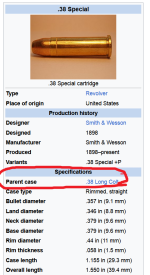I've considered this subject a fair bit. While I have a legal background, the following is not legal advice - just interpretation of the regulations and some accumulated knowledge.
Kotkotofeich is correct re the regs:
https://laws-lois.justice.gc.ca/eng/regulations/SOR-98-464/FullText.html
A handgun is considered antique if it was:
- Manufactured prior to 1898 AND
- Is designed OR adapted to fire rimfire or centre fire cartridges OTHER than those listed in the regs.
So if it's from 1897 or prior and was originally chambered in a cartridge that is not listed, it is considered an antique. This also allows for conversion to other cartridges not listed in the regs.
You'll need proof of both calibre and pre-1897 manufacture. This is easier with some firearms than others. For example, all Webley MKII's are antique as they were only chambered in .455 Webley, and manufacture ceased in 1897 when they moved to the MKIII.
This now opens you up to possibilities that are only really limited by technical details and safety. You could legally convert your Colt 1892 from .41LC to .38SPL (assuming you use parts marked for .38SPL and the FRT lads don't decide that it's actually for .38S&W) and have it retain antique status and everything that goes with that - but is it technically safe to do so?
I've heard of or seen examples of people doing similar things - converting a Remington 1875 (all units produced prior to 1890) that was originally chambered in .44 Remington (an exempt cartridge) to .44SPL using a new production cylinder. I've heard of folks converting pre-1897 Colt SAA's from .41LC to .38SPL using new production cylinders and barrels. The main risk, as I understand it, is the potential for frames to stretch, as the cylinder is really the pressure bearing part.
There are other possibilities - taking an original Remington 1858 frame (which is the "antique" status firearm) and swapping in new production Uberti parts (barrel, cylinder, etc.) and using a cartridge conversion kit.
This also applies to other categories - it would be legally possible to have a pre-1898 Martini Henry action built up into a new rifle in .45-70, which is larger than the minimum bore diameter of 8.3 mm required by the regs to be an antique.
Questions remain - is it safe to do so from a technical standpoint, is it worth the hassle, can you find an original antique that you are willing to mess with?
A very fun armchair conversation - I will continue to take my .22 out for plinking, it is much cheaper.







































































